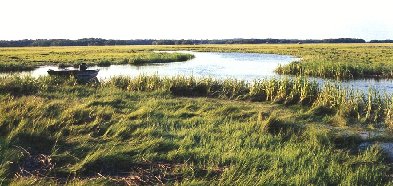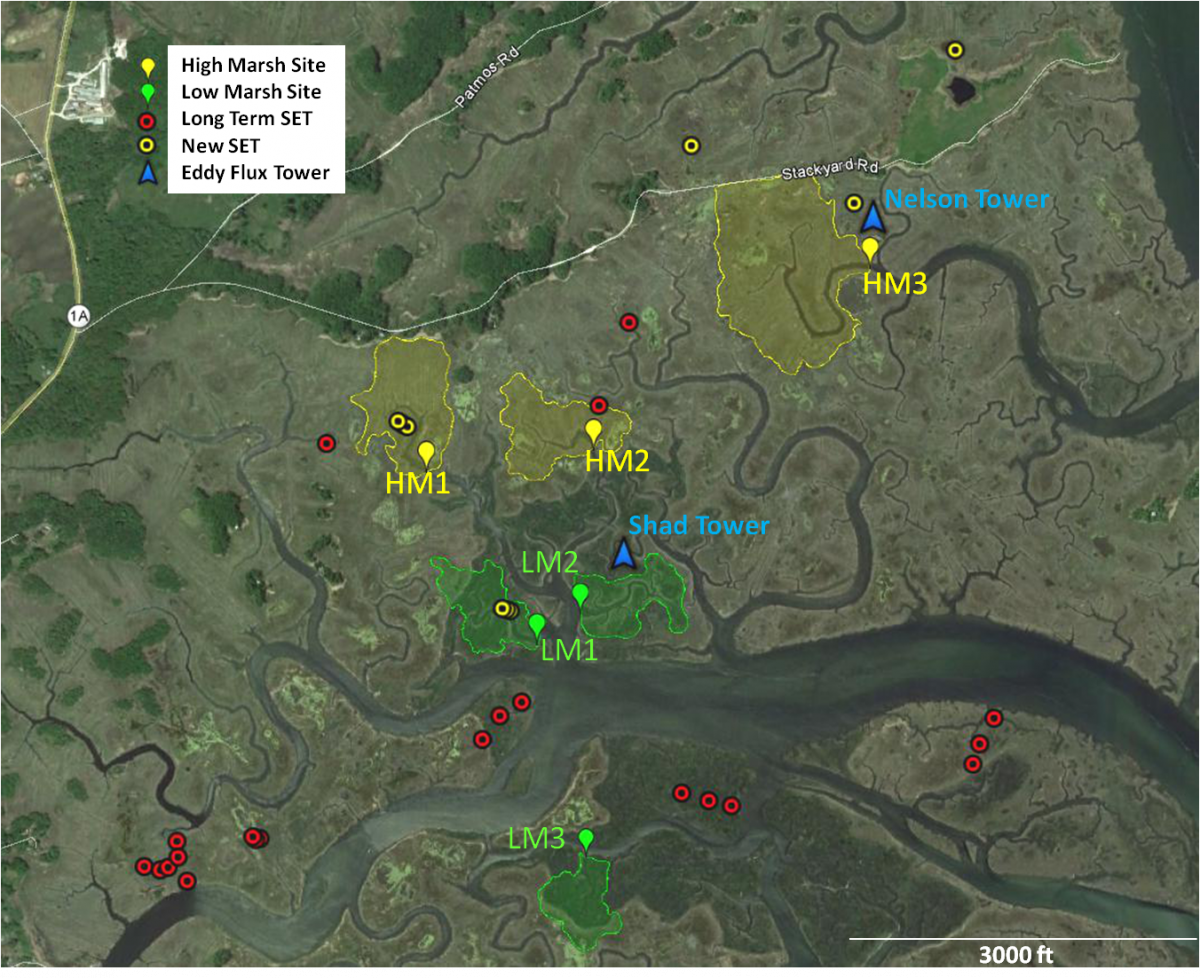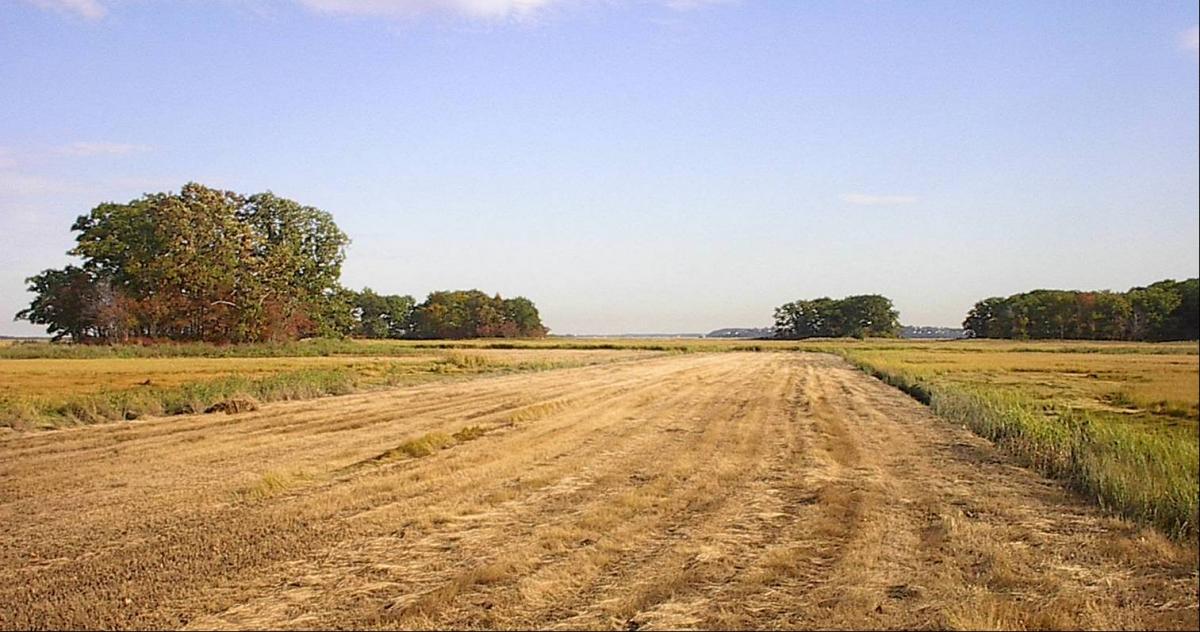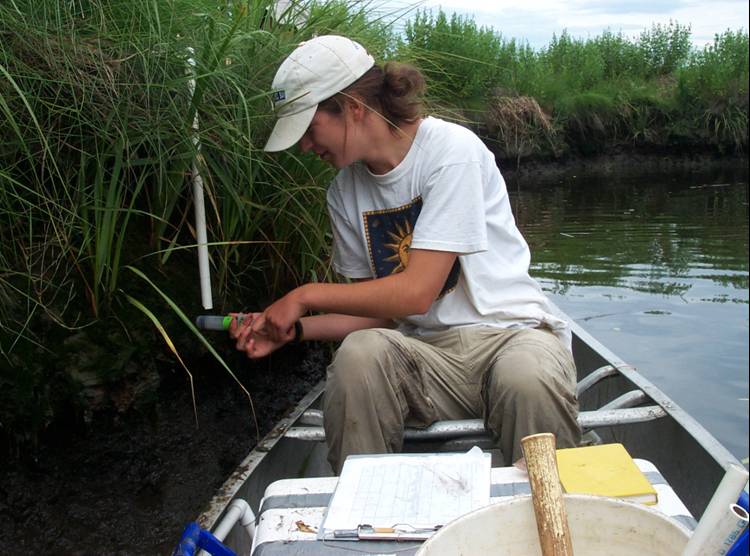Plum Island Ecosystems LTER is involved with five long-term experiments to determine the effects of nutrient loading, detritus removal and sea-level rise on the marshes and tidal creeks of the estuarine system. Data associated with long term experiments can be found here.
 |
Tidal Creek Fertilization ExperimentIncreased nutrient input to estuaries from human activities has been a concern to scientists for many years. In addition to stimulating plant and algal growth, nutrient fertilization can alter plant species composition and change the sedimentation and erosion rates that regulate marsh accretion and decomposition. The presence of higher order animals, such as fish, can also affect the balance of marsh accretion and loss by influencing the flow of nutrients within the marsh ecosystem. Through their feeding and behavior, fish can increase or decrease plant and algae production, increase decomposition and move nutrients into or out of the marsh ecosystems through migration. The TIDE project is long-term experimental ecology at the scale of the ecosystem and unique in the world. An ecosystem-level approach is used to understand the effects of eutrophication and altered food webs on saltmarsh ecosystems in the Plum Island Estuary, Massachusetts. The TIDE project is unique because it is the only experiment in the world to maintain a long-term (8 years as of 2011), landscape-level (6 ha per plot) fertilization manipulation. Fertilizer is added to the flooding waters of tidal creeks 15x reference levels to examine eutrophication effects on salt marshes. An additional manipulation is the removal of a key predator in this system, the killifish, Fundulus heteroclitus, to examine how food-web alterations impact trophic interactions and ecosystem functioning of the marsh. This manipulation, too, occurs at the landscape level. For more information see the TIDE Project web site. |
Plot-Level Marsh Fertilization ExperimentWe have long-term experiments in 2 major marsh types (Spartina alterniflora and Spartina patens) where plant census and porewater nutrient data are collected monthly. Plots receive monthly factorial N and P additions to determine nutrient controls on primary production and sediment accretion. The SET measurements and end of season biomass measurements in fertilized plots will be used to track long-term trends in primary production. Complementary work on marsh productivity in North Inlet, South Carolina is being supported by NSF’s LTREB program. The monthly census of plant heights is giving us unparalleled temporal resolution of salt marsh production that is not corrupted by spatial variability (Morris and Haskin 1990). |
|
 |
Space for Time StudyWe are using a space for time approach, coupled with our long term |
 |
Marsh Detritus Removal ExperimentOver 400 hectares of Plum Island Sound marsh are regularly hayed by commercial farmers, most on a biennial basis. Haying used to be common and extensive throughout New England marshes; however, the operation in Plum Island Sound is one of the last operations remaining. Haying of the salt marsh is analogous to large-scale removal of detritus or herbivory. Haying removes >90% of annual aboveground production and biomass. This represents a significant loss of nutrients (Knapp and Seastedt 1983) and organic matter that would otherwise be available for marsh detritivores and microbes, export or peat accumulation. A long-term experiment is being carried out by PIE LTER scientists to study the effects of marsh detritus removal on a variety of ecological processes in the Plum Island Sound marsh ecosystem. Knapp, A.K., and T.R. Seastedt. 1983. Detritus accumulation limits productivity of tallgrass prairie. Bioscience 36:662-668. |
 |
Marsh Fertilization ExperimentThe Ipswich Wastewater Treatment Plant located on Fowlers Lane receives wastewater from approximately 2,000 customers. The treatment plant, originally constructed in 1959, was upgraded in 1963, 1972 and 1996. The plant is a secondary treatment plant and is designed to treat 1.8 million gallons of wastewater per day, with an instantaneous peak flow of 5.4 million gallons per day. Treated effluent is discharged to Greenwood Creek, Ipswich, MA. PIE has set up transects to study the impacts on the salt marsh vegetation from nutrients discharged from the Ipswich Wastewater Treatment Facility. The marsh around Clubhead Creek in Rowley, MA is used as a reference. |
